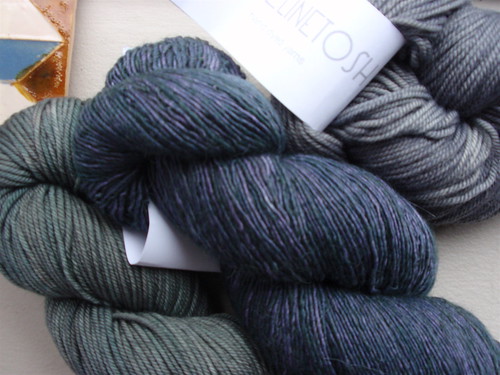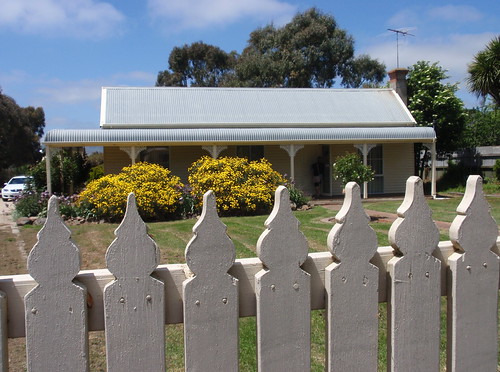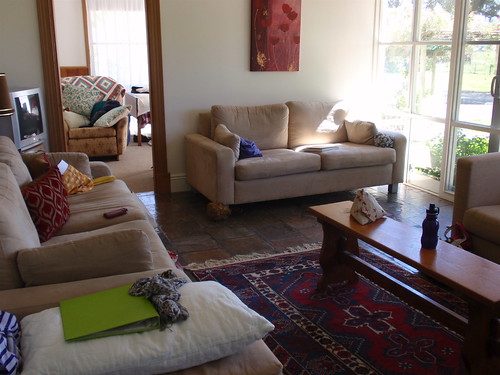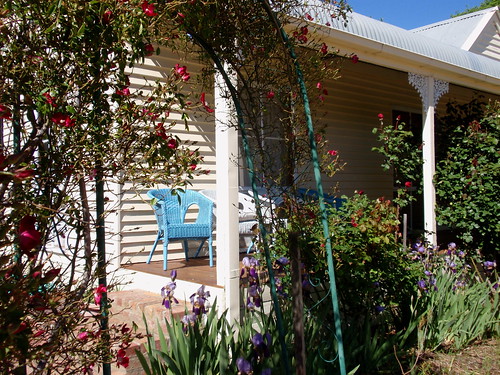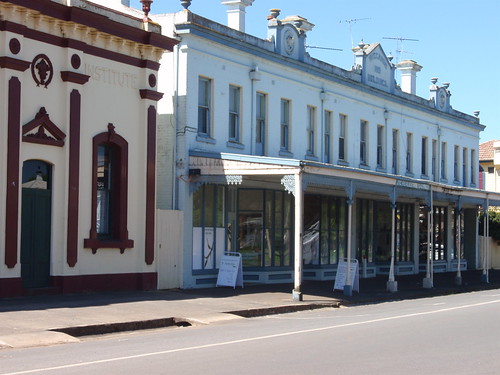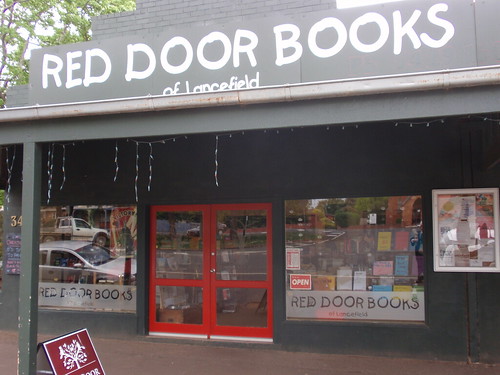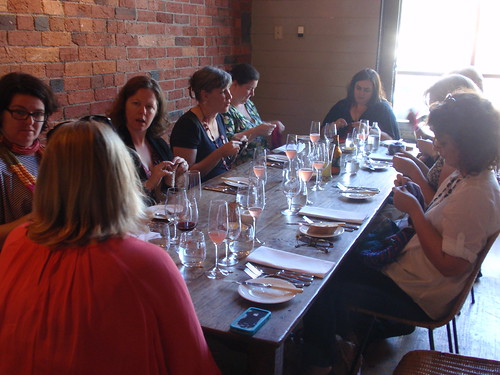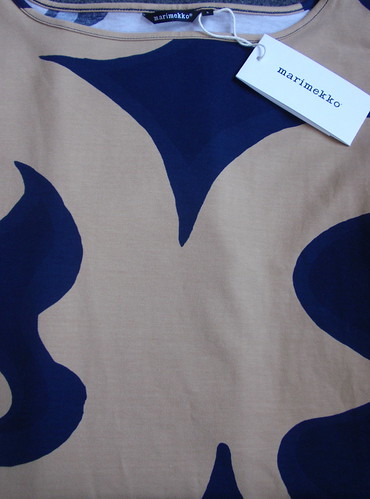I'm still reading Ari Seth Cohen's blog,
Advanced Style. Well, maybe 'reading' isn't quite the right word, because the text of the blog is minimal and not usually of great interest - unless he is quoting the 'life advice' of some of his subjects. But the photos are good, and the subjects of the photos are fascinating. For those of you who haven't yet discovered this site, it's a kind of
Sartorialist of older people - people of 'advanced' age. It's an inspired idea for a blog, and the people it features are also inspirational (if often a bit worrying - but more of that later).
Recently, the blog featured a
couple of
posts of women who are a hundred years old. These women look elegant, superbly accessorised, and so, so coordinated. They look as if, at a hundred, they still take considerable trouble to present themselves to the world. One of the women, Ruth, was asked for her life and style tips and among them was the following:
"I make myself go out everyday, even if its only to walk around the block. The key to staying young is to keep moving. You are never too old to exercise."
"Invest in Quality pieces, they never go out of style."
"I dress up everyday and I don't wear blue jeans. I dress up even to mail a letter'
Every time the older people of the 'Advanced Style' blog are asked for advice, these items feature, and every time I read such advice - particularly the final piece about dressing up everyday - I can't help thinking about the time and energy this must take, and whether the goal they achieve is worth the effort involved. There are days when I'd love to be like these old women - and days when it seems as if it's a huge investment of time, energy and money for an ultimately frivolous end.
'Advanced Style' has led me to lots of idle speculation. I've decided the inhabitants of Ari Seth Cohen's blog must be rich - or, if no longer really rich, were once rich and are now financially comfortable. You can only advise people to invest in 'quality pieces' if you are or have been able to afford them - particularly when the 'quality pieces are by designers such as Issey Miyake and Yves St Laurent. Periodically, some of the Advanced Style characters discuss the virtues of 'thrifting' or of 'making do'. But I don't think their thrifting is done in the local Vinnies - but rather in the shops that specialise in reselling name brands. They're often good at making do and mending, but then the recycling is of beautiful fabrics and the 'making do' brings together lovely objects in unexpected ways.
I often wonder if you would find such a cast of elegant older people in many cities other than New York? Paris, maybe, or other cities where there's a dense concentration of affluent people and a vivid street life. You're much more likely to 'dress up to mail a letter' if there's a mail box within reasonable walking distance and people in the street to notice you while you do so. You are also much more likely to dress up every day if there is somewhere to go every day that's engaging and easily accessible. Driving in from the suburbs doesn't quite have the cachet of simply taking the lift to the ground floor.
The things I most envy in many of the entries in this blog are the accessories - the bangles, brooches and necklaces, the hats, the gloves, the handbags, the spectacles, the scarves. Getting old has to have some compensations, and the gradual accumulation of accessories is one of them. I guess many of these people are rich enough to keep replenishing their stocks, but some of the jewellery and other accompaniments look timeless - as if they've been worn for years. I think this is reflected in the nonchalance with which some of these women carry off their style - they've just had so much practice.
I've been thinking about such subjects a bit more than usual because I've also just been to see the documentary
Bill Cunningham: New York. Do go to see it, if you have the opportunity. Bill Cunningham works for the
New York Times where he has two weekly columns - one of which documents New York high society at charity events and parties, and the other of which features street style. Bill Cunningham turns 80 while the documentary is being made and he still spends his days walking the streets of New York, lingering on street corners, photographing street fashion, and his nights bicycling from grand event to even grander event photographing the rich and well dressed. He refuses to photograph celebrities only because of their celebrity. They must also be stylish. As Anna Wintour says at one stage - to have Bill ignore you is death.
Bill Cunningham gains admittance to the most exclusive of Paris fashion shows because 'he's the most important man in the world', but he dresses in a blue workman's jacket, only eats the simplest of foods in down-market cafes, and has lived for many years in a tiny studio in Carnegie Hall, crammed with metal filing cabinets of his photos, sharing a bathroom down the hall and with no kitchen. He's lived his life among the rich and famous but has a very strict code of owing nothing to anybody. He works all the time and is passionate about clothes and style. He lives a busy, honourable life devoted to the observation of clothes. I'm finding it hard to find words for what I find so fascinating about this. Maybe I'm a bit of a puritan and part of me thinks that the brilliance and dedication that Bill Cunningham shows should be devoted to something more worthy than clothes. But then, at the same time I listen avidly for his gentle observations and all the accumulated fashion knowledge of his 80 years.
I like to know that something that's so central to our lives and simultaneously valued and worthless - style - can be linked to longevity.
